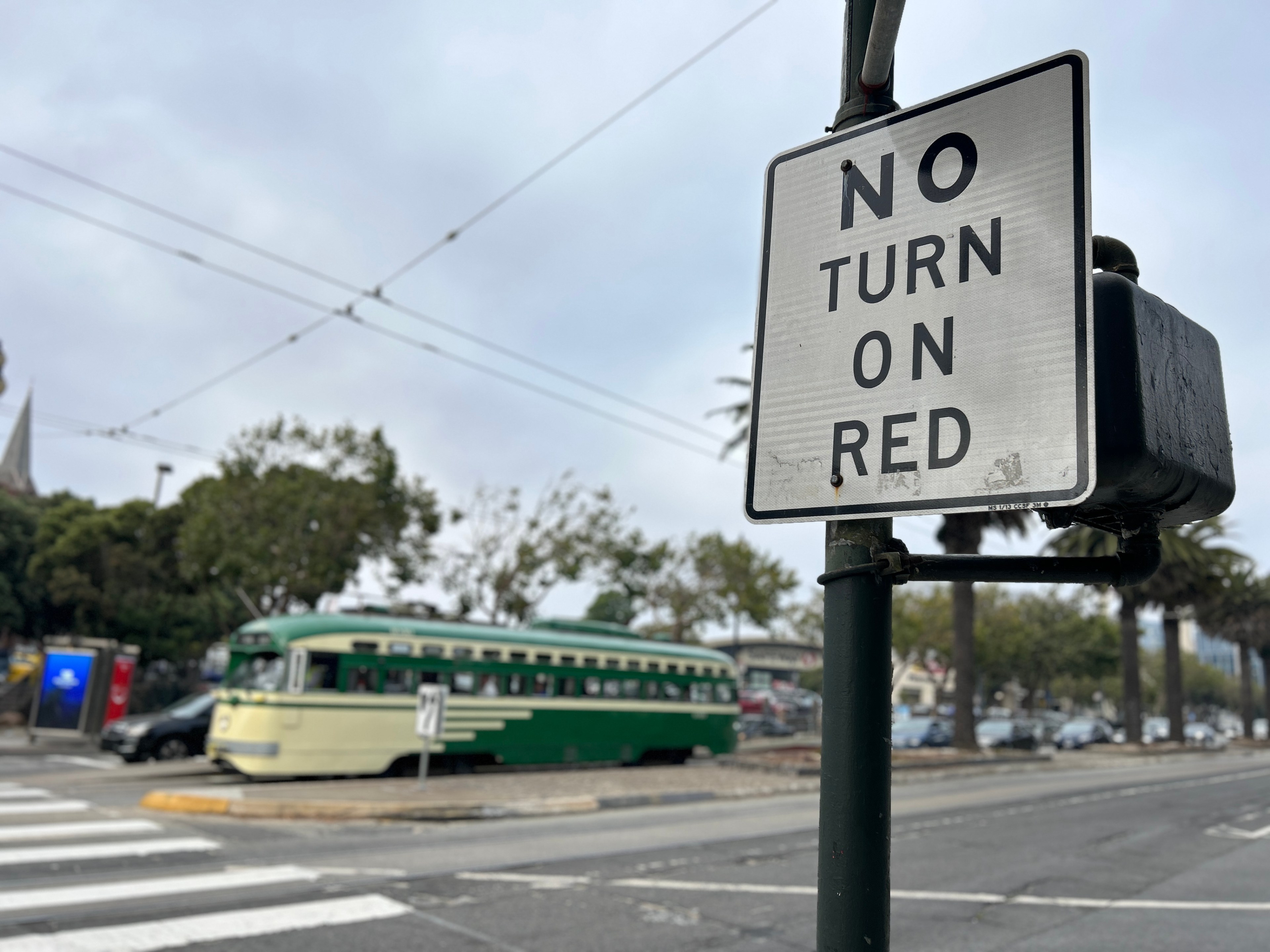Almost everywhere in America outside of New York City, drivers are allowed to turn right at a red light after a full stop—unless an intersection has a sign specifically saying they can’t. But one local traffic safety advocate is pushing to make San Francisco the nation’s next major city to prohibit making a right on red everywhere.
“No Turn on Red” is Luke Bornheimer’s effort to get the San Francisco Municipal Transportation Agency to implement a citywide ban, and he’s marshaling a campaign to get 6,000 people to write letters supporting it. Citing increased safety and comfort for pedestrians, cyclists, scooter riders and anyone who uses crosswalks, No Turn on Red claims that drivers will also reap benefits from greater predictability on city streets.
“People get it. I even have people say the quote-unquote tradeoff is what? The three seconds I have to wait for a red light?” Bornheimer told The Standard. “The other thing I didn’t expect was people saying they’ve had other drivers honk at them because they haven’t turned on red. These people are excited about the prospect.”
To create safer streets, Bornheimer said, requires only the political will on the part of the city’s transit administrators. And the choice is essentially a stark one: Save a few seconds, or save lives.
“This is an opportunity for the agency to get a quote-unquote easy win, but they’re resisting,” Bornheimer said. “It seems so backwards, when people want to see progress on this.”
A need for improvement is there: In 2022, some 39 people lost their lives on city streets, including 20 pedestrians. Undeniably, this is only a fraction of the deaths attributable to drug overdoses. But Vision Zero, San Francisco’s stated goal of eliminating traffic fatalities by 2024, essentially has three months to turn around its fairly dismal record. Although only 1% of injury crashes stemmed from a driver making a right on red, one in five crashes that injured a pedestrian or a cyclist involved a driver turning at a “signalized” intersection.
A right on red may feel like a natural component of driving, but its widespread adoption as a policy only came after a 1975 federal transportation bill legalized it nationwide in an effort to raise fuel economy. Almost 50 years later, Bornheimer says there is no substantive data to support the idea that the policy saves drivers money on gas.
Other cities are beginning to rethink the rule, too.
Outside New York’s five boroughs, Bornheimer claims Washington, Seattle, the Michigan college town of Ann Arbor and Cambridge, Massachusetts, have all begun to roll back right on red.
San Francisco is, to some extent, already on board.
In 2021, in response to pressure from then-Supervisor Matt Haney, the city’s transit agency reduced speed limits to 20 mph in the city’s Tenderloin neighborhood while installing “No Turn on Red” signs at 50 intersections.
The results were stark, with close calls falling by 80% in that low-income densely populated part of town.
The city’s transportation agency has evaluated the issue several times, according to Ricardo Olea, who leads the transportation engineering subdivision. One concern was that eliminating the ability to make a right on red would lead to more right turns on green, when drivers typically approach intersections at higher speeds. But, based on the success of the Tenderloin pilot project, the city believes the idea is worth replicating elsewhere.
“We decided to expand no-turn-on-red to other, similar, high-pedestrian activity areas,” Olea said, adding that the agency got a state grant to install signage in Union Square, Chinatown and Financial District.
That would be a different approach from other traffic-calming measures like red-light cameras, which can be found at only a handful of intersections. Beyond that, San Francisco has no plans to implement No Turn on Red citywide at this time.
Of course, whether San Francisco drivers will comply with a change in the law is another question.
“If drivers are careful, turning right on red is perfectly safe,” said Tony Mueller, a San Francisco resident who commutes to the Peninsula by car. “Especially late at night or when there’s no pedestrians around.”
